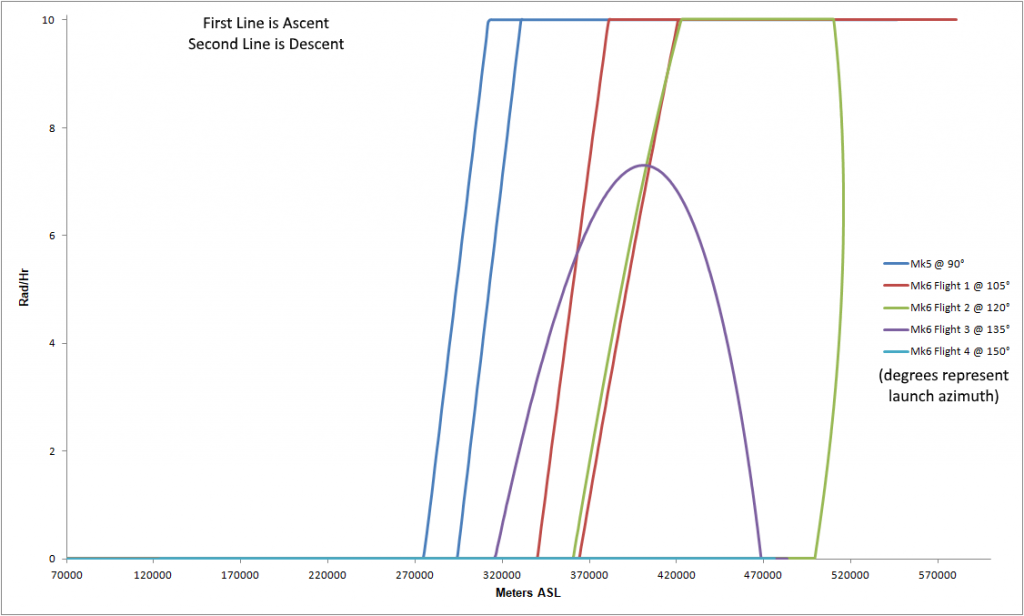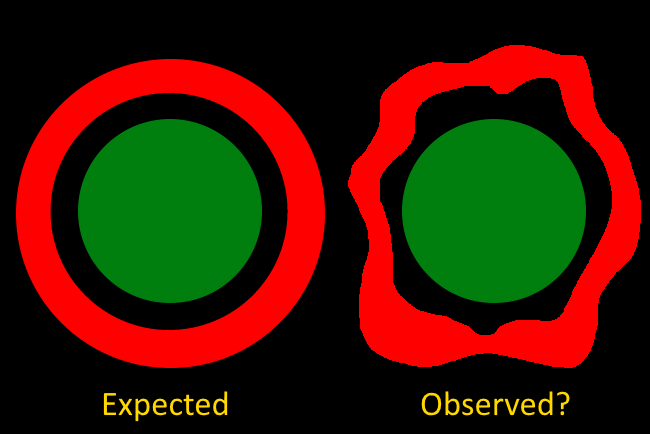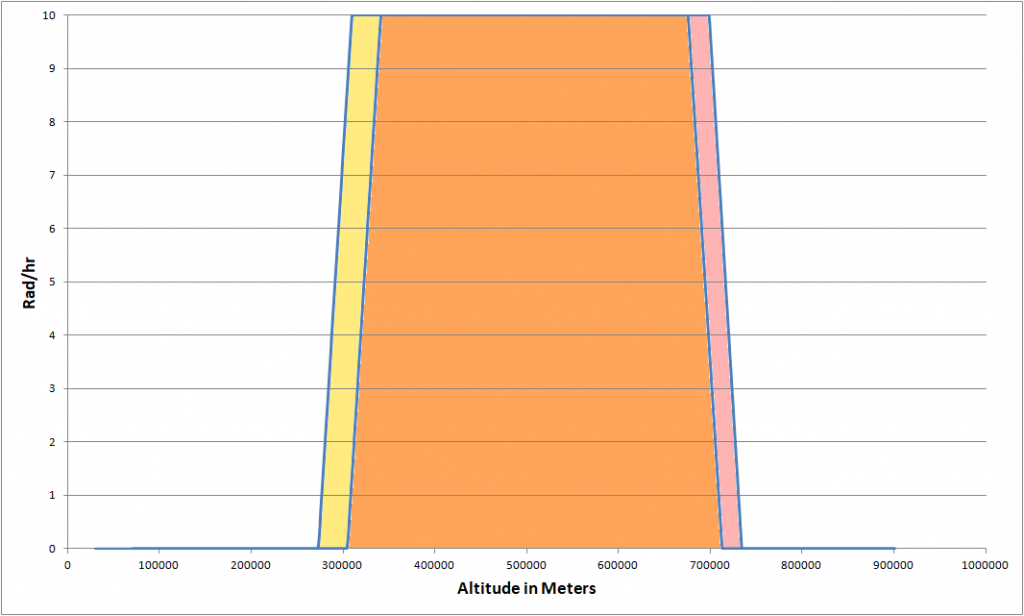The first flight of the Progeny Mk6 Block II gave us some new insight into the region of hazardous radiation that has been found to hover above our planet. If you need a refresher, this article we posted earlier this year will get you up to speed. With the Block II finally being able to pass through and confirm that there is an upper boundary, it brings new context to the data gathered in the past and has brought us closer to understanding exactly what type of structure exists around Kerbin.
The original article was written prior to embarking on a campaign of Progeny Mk6 Block I launches at ever-increasing azimuths to attempt to find an outer boundary to determine the width of the field relative to the surface. It took 4 tries until we finally were able to send a rocket up that did not record any changes in radiation after entering space.
 To attempt to verify that the region was uniform both above and below the equator we launched a fifth rocket along a 45° azimuth to try and get similar measurements to the third flight that skimmed through the edge when launched at a right angle to the south along a 135° azimuth. The rocket failed to register any radiation increase, which means the field could surround the planet unevenly. Another theory however is that the rocket would have passed through a similar region if the launch pitch angle hadn’t been spoiled by the softer ground of the north field. The launch base, after the rocket was mounted, sank forward to an angle of 83° (instead of 85°) by the time the rocket was launched, which could have flattened the trajectory enough compared to the third flight to just barely miss the same area on the northern edge.
To attempt to verify that the region was uniform both above and below the equator we launched a fifth rocket along a 45° azimuth to try and get similar measurements to the third flight that skimmed through the edge when launched at a right angle to the south along a 135° azimuth. The rocket failed to register any radiation increase, which means the field could surround the planet unevenly. Another theory however is that the rocket would have passed through a similar region if the launch pitch angle hadn’t been spoiled by the softer ground of the north field. The launch base, after the rocket was mounted, sank forward to an angle of 83° (instead of 85°) by the time the rocket was launched, which could have flattened the trajectory enough compared to the third flight to just barely miss the same area on the northern edge.
Adding to the mystery rather than helping to solve it, the most recent flight of the Block II succeeded in finding an upper boundary and fell back through an equally dense area of hazardous radiation that was slightly higher up. We’ve had hints of this in the data from the previous missions but for the first time we can clearly see it.
In addition to the section traveled down through being slightly higher than the one traveled up through, it’s also slightly thinner, although this did not seem to increase the amount of radiation detected so it’s not denser. Scientists are still strongly favoring the belt theory given that we never fail to encounter the radiation no matter when we launch along the equator and we can find none to the higher northern and southern latitudes, however they did not expect to have to explain why the belt wouldn’t circle the planet uniformly.
 So far the previous rocket flights have probed the radiation field in various ways – its width by launching on various azimuths north and south and its height by launching various distances from the surface. The only variable that has yet to be changed is the time of day the rocket was launched. Several theories that scientists have been considering for a few years now are related to the effect our sun may have not only on our magnetic field but these areas of radiation within it. We say areas now thanks to the recent discovery of an additional region of radiation surrounding both poles, which seems to be associated to the aurora that appears at the same latitudes.
So far the previous rocket flights have probed the radiation field in various ways – its width by launching on various azimuths north and south and its height by launching various distances from the surface. The only variable that has yet to be changed is the time of day the rocket was launched. Several theories that scientists have been considering for a few years now are related to the effect our sun may have not only on our magnetic field but these areas of radiation within it. We say areas now thanks to the recent discovery of an additional region of radiation surrounding both poles, which seems to be associated to the aurora that appears at the same latitudes.
We have no doubt that everyone has been waiting for a night launch! While we’re not sure exactly what to expect, scientists are confident that we will see some variation in the data that will help to bring us even closer to understanding the space around us. This mission can be carried out with a Block I while the Progenitor team is still working on resolving a stability issue with the Block II.








